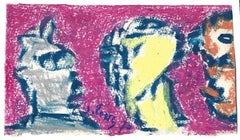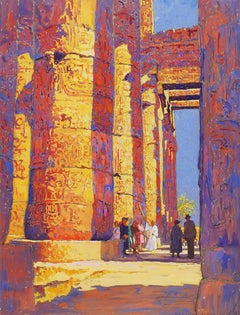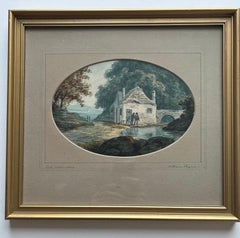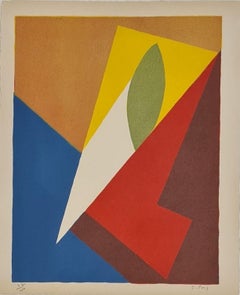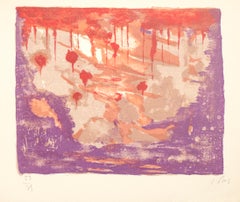Jean Pons Art
Jean Pons was born in 1913 in Paris and died in 2005. He was a great French artist of the 20th century. In 1938, he founded his lithography studio which allowed him to work with all the great artists of the century such as Nicolas de Staël, Serge Charchoune, Robert Delaunay, Wassily Wassilyevich Kandinsky and Serge Poliakoff. In parallel, Jean created his pieces in an Expressionist style. Later on, he started working on classic subjects like dead nature, landscapes and portraits. In the late 30s, he turned towards abstraction and practised different techniques including collage and mixed techniques. But this period lasted only a short time and under the influence of the New Figuration movement, he took a figurative style. He kept his predilection for bright colors although his choice of colors softened gradually.
Mid-20th Century Abstract Jean Pons Art
Charcoal
1960s Expressionist Jean Pons Art
Paper, Charcoal, Gouache
1970s Contemporary Jean Pons Art
Oil Pastel
20th Century American Realist Jean Pons Art
Paper, Gouache
Early 19th Century English School Jean Pons Art
Watercolor, Pencil, Charcoal, Paper
2010s Contemporary Jean Pons Art
Paper, Oil Pastel
2010s Contemporary Jean Pons Art
Oil Pastel, Ink, Sumi Ink, Oil, Acrylic, Watercolor, Archival Paper
1830s Folk Art Jean Pons Art
Paper, Watercolor, Gouache, Pencil
Mid-20th Century Expressionist Jean Pons Art
Pastel, Ink, Watercolor
Early 1900s Ashcan School Jean Pons Art
Gouache, Pencil, Paper, Ink
2010s Contemporary Jean Pons Art
Paper, Oil Pastel
2010s Contemporary Jean Pons Art
Color Pencil, Graphite, Paper, Gouache
2010s Contemporary Jean Pons Art
Paper, Oil Pastel
1870s Realist Jean Pons Art
Archival Paper, Watercolor, Gouache
1930s American Realist Jean Pons Art
Paper, Gouache
1950s Jean Pons Art
Lithograph
1960s Abstract Jean Pons Art
Lithograph
